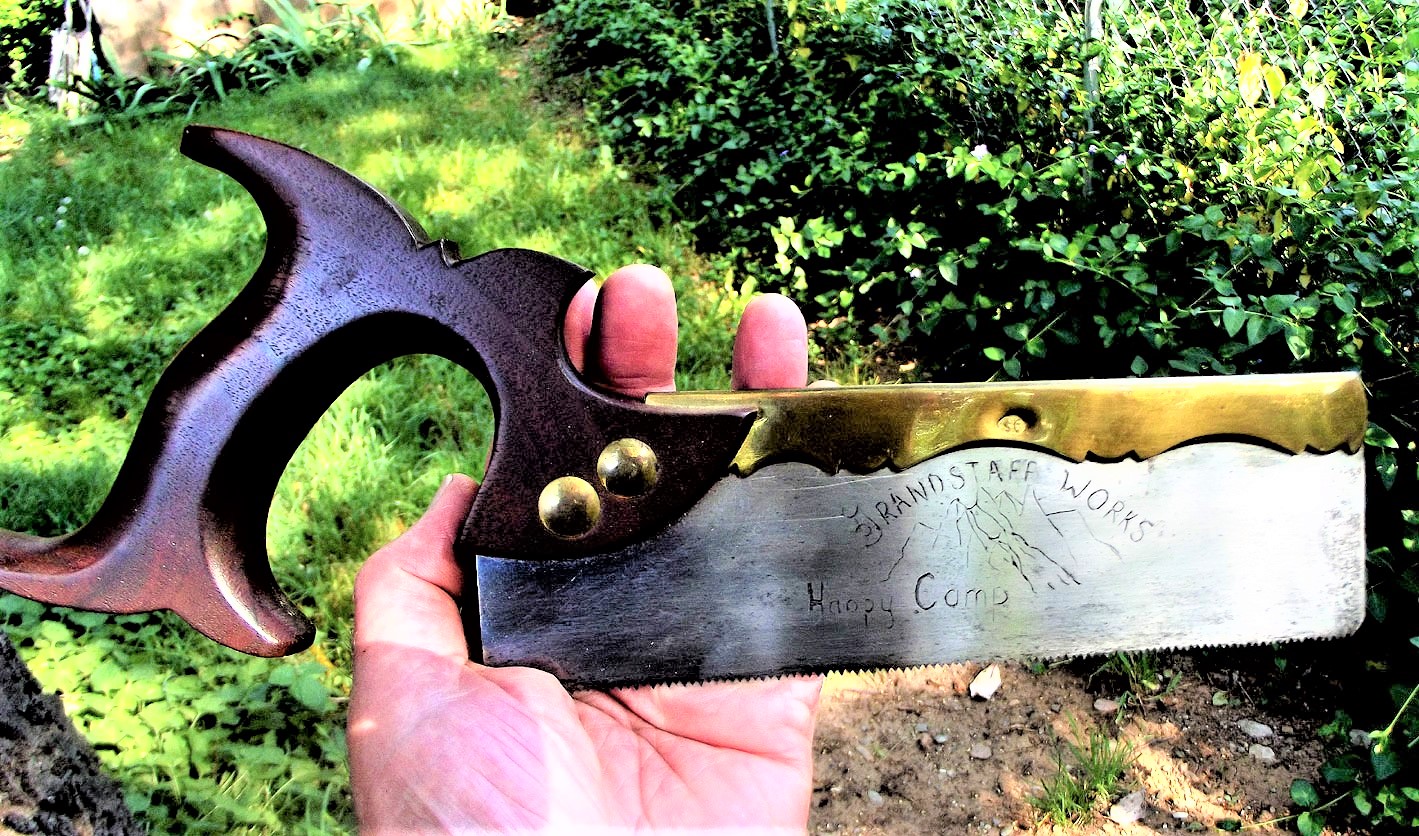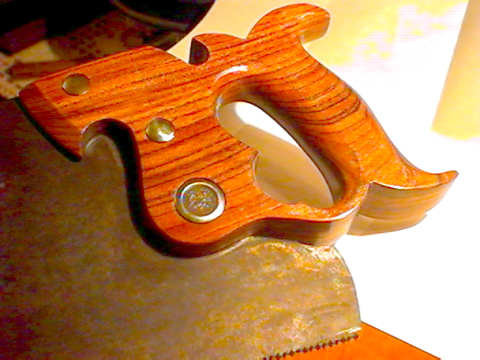|
|

Saws
I am crazy about the word tote. Whether for plane or saw or toolbox, you just have to love that word! I've been messing with totes for some time. I guess around 25 years on 'n off.
First up you should know I love little. The little saws below are rosewood handled for the bigger 2 and boxwood for the smallest. Not even rosewood could hold up in the tiniest size.
|
|
This saw is completely handmade. The tote is carved from local black walnut. 'Ol Doc Chambers had to take one down on his place and donated it to the local high school shop class maybe 20 or more years ago. The kids wasted most of it on forgettable spice racks and such but I've held a few choice scraps just for sentiment. The brass back was folded and fileworked. You can't really see in in this pic, but the dent in the middle of the back?? That's my touchmark.

|
This was one of my early carved totes. Not too bad considering. Included is the writeup from pretty long ago.
|
Well, since I got some interest and questions, hey, all ya hadda do was
ask.
|
 |
This was also an early one. The truly old halfback saws usually had a fairly vertical grip. More rosewood on this one.
|
|
| Below are a pair of keyhole
saws. Or rather, one keyhole and one compass. The bottom was a gift from
Brian Buckner in cocobolo. The top one I carved with a vertical grip in
rosewood. The teeth are filed for a pull stroke, something I do for this
kind of saw. It's hard for me to believe anyone ever filed teeth for a
push stroke in these saws, they're so frail!
|